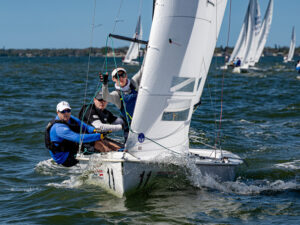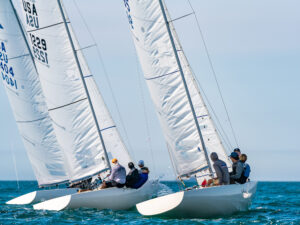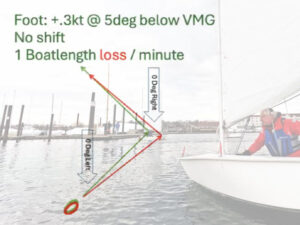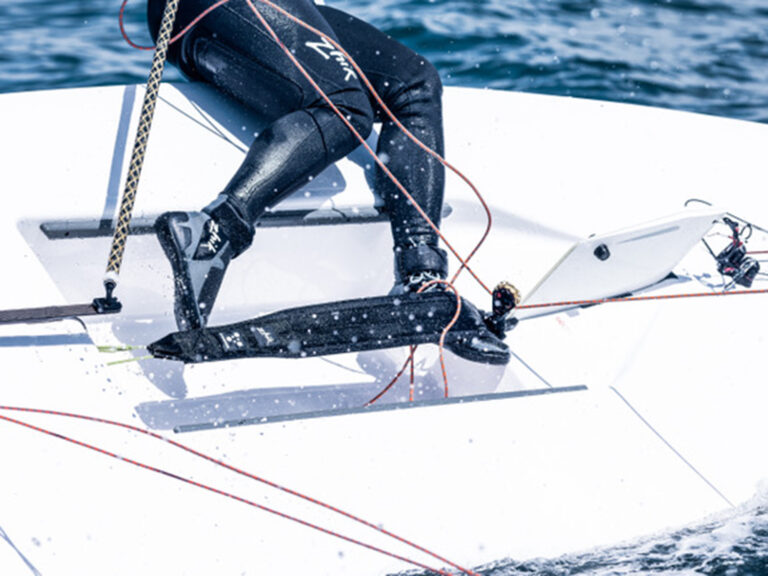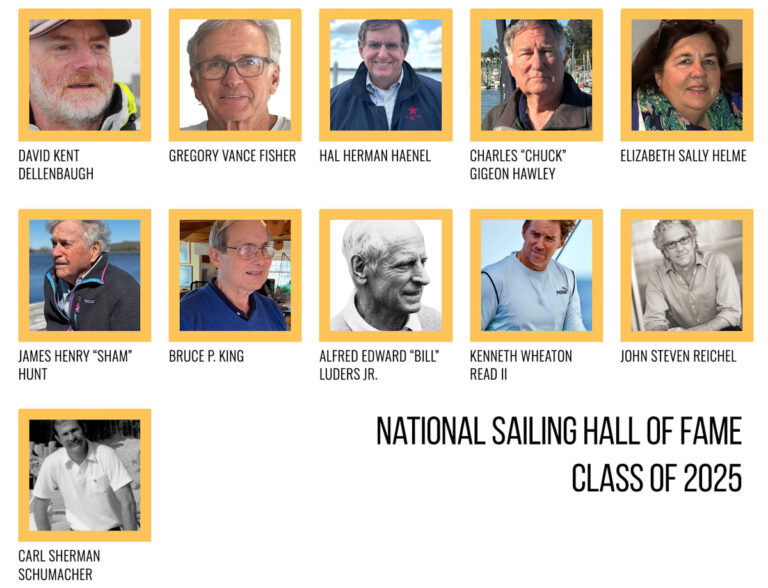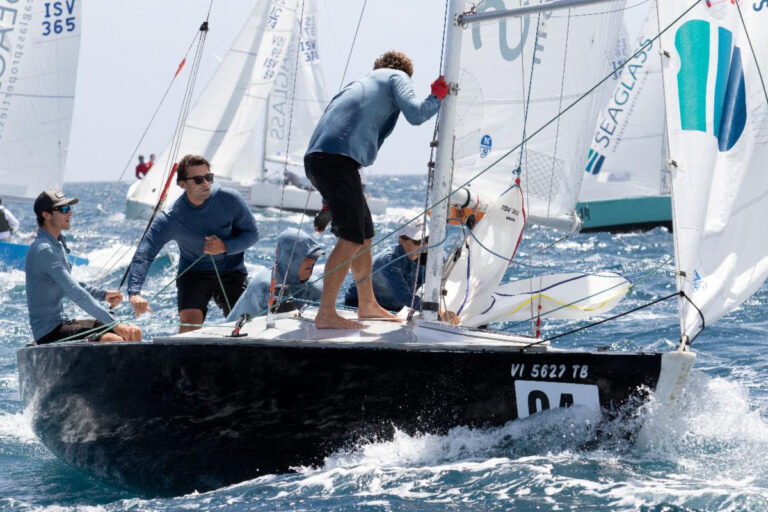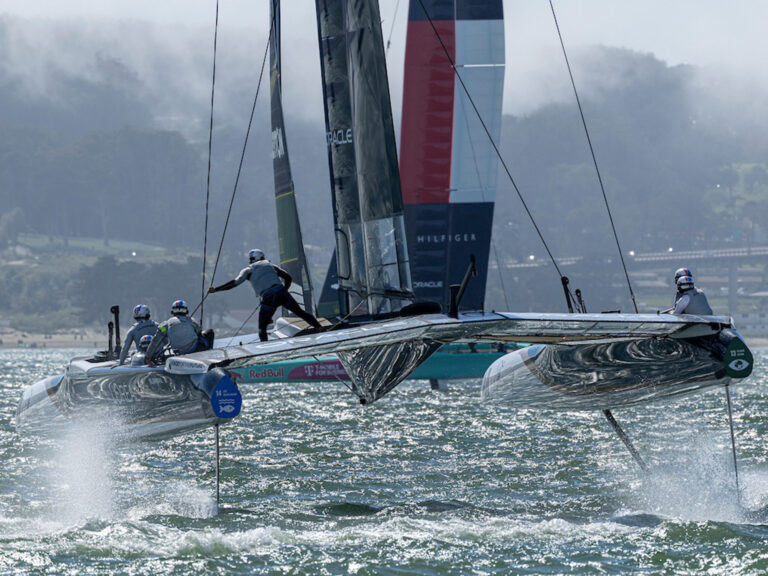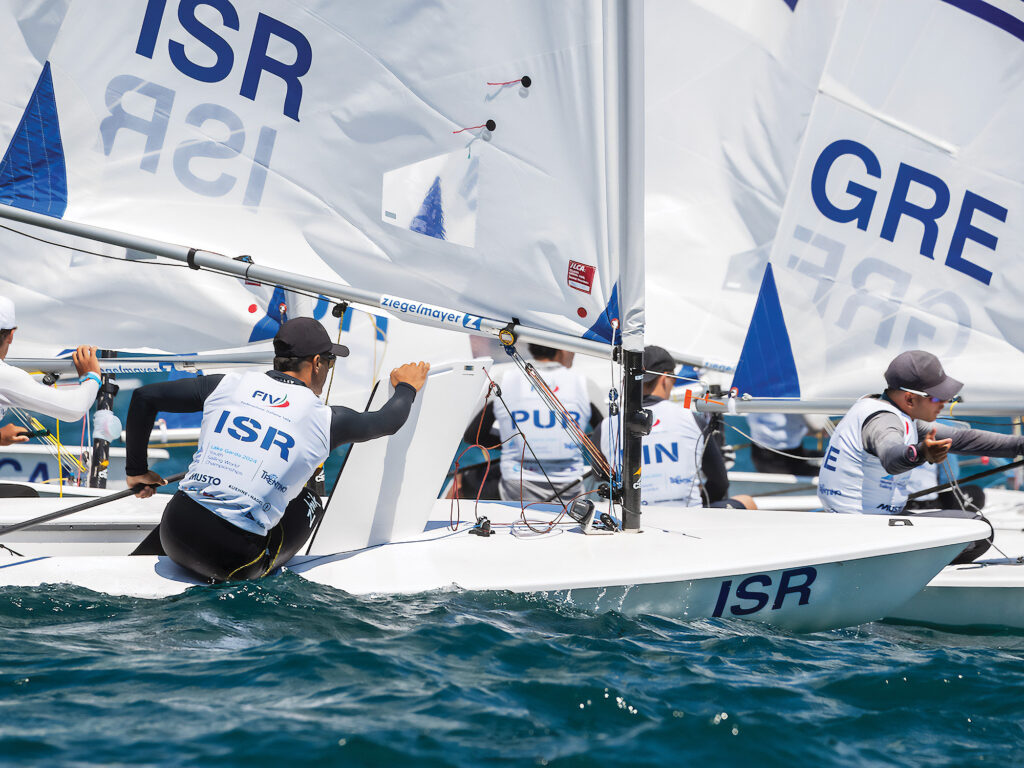
One of the coolest uses of a centerboard I’ve ever seen was at the Smythe Laser Championship qualifier—a junior sailing regatta. The two best sailors were fighting for a chance to go to the finals as they approached the leeward mark with the trailing boat barely overlapped. In an amazing move, John Torgerson, who was slightly ahead of the competition, pulled his daggerboard up all the way, and pushed his tiller toward the competitor to start sliding sideways, breaking the overlap. He literally slid into the zone like a race car drifting around a corner and started hailing, “No room!” He then slammed the board back down into the trunk and jibed to round the mark ahead. There was a protest, but he prevailed in the end and off to the Smythe finals he went. So cool.
For many dinghy sailors, the centerboard is hardly a consideration. It tends to be out of sight and out of mind, and either up or down or somewhere in between, but rarely dynamically adjusted. As a high school sailing coach, I can see that most sailors focus on other skills first before thinking about the importance of the centerboard, but this important underwater appendage can make a world of difference in your performance and speed, so let’s discuss in the simplest terms how it’s best used.
The first rule of thumb is that you want your centerboard, daggerboard or leeboard all the way down while sailing upwind to create more lift and side force, and to give you more power while reducing leeway. Downwind we prefer the board as high as possible to reduce drag while keeping the boat tracking, especially if we’re not sailing dead downwind. And let’s not forget stability—no sense in capsizing for a small gain in boatspeed.
In most boats, this means putting the centerboard all the way down upwind while sailing in light to medium winds. On some boats and in certain windspeeds, it can be faster to pull the board a few inches, but we’ll get to that later. As a point of making sure the centerboard is fully down and then some, I’ve noticed top FJ and 420 sailors experiment with the type of blocks used on top of the board to allow it to go down just a little bit more than the competition. This deeper board gives them more power and less leeway upwind, which is a performance gain.
Downwind, if running very deep, let’s say close to dead-downwind, we don’t need the board dragging through the water, so we can pull it all the way up. However, if the boat starts rocking excessively and is hard to control, we can drop the board down until the boat becomes stable—think of this as your “roll control.”
Top high school and college sailing crews are very active with the centerboard downwind, dropping it down a few inches in puffs to prevent the boat from overheeling, and pulling it up in lulls when it is less needed. Playing the board can be very fast.
If you are reaching, the basic rule of thumb is to pull the board up until you notice the boat starting to slide sideways, then put it down a touch so that you are tracking straight. By doing so, you’re reducing drag as much as you can and using only the amount of board necessary to track and go forward.
When sailing downwind with the board up to some degree, it’s also effective to put it down for a maneuver, which gives you stability and helps you power forward out of roll tacks and roll jibes when you’re generating a lot of side force. As a bonus, it also clears it out of the way for the forward crew in doublehanded and triplehanded boats.
For more high-level thoughts on centerboards, I reached out to my friend Will Ryan, a fantastic Olympic International 470 gold medalist. After dominating the class for many years, he’s got a solid handle on how and when to play the centerboard. As a general rule, he says, having the centerboard to its maximum down position is useful when sailing upwind or in light air. Having the centerboard at its maximum down (or vertical down such as in an International 470 or 505) helps the foil create its maximum side force, which helps generate power in the boat and to create lift. That’s a good combo. This setup is also fast when you’re overpowered but trying to sail a “high mode.”
In smaller boats especially, Ryan adds, pulling the board up a few inches in breeze is fast: “The centerboard acts as a power control. Water has more drag resistance than air, so the benefits of reducing hydrodynamic drag can outweigh the benefits of reducing aero drag (smaller sails) because often the bigger sails can still be useful on the downwind legs.”
For many dinghy sailors, the centerboard is hardly a consideration, but this important underwater appendage can make a world of difference in your performance and speed.
Ryan also reminds us that raising the centerboard is a good way to optimize the balance of the boat when overpowered: “Changing the centerboard’s side force can make the boat more responsive to gusts and easier to handle in waves, while also making the boat easier to steer, which generally makes the boat easier to control. Upwind, more side force might be required from the centerboard to help with the boat performance (because the lift from a centerboard is related to the speed it is moving through the water). Conversely, more centerboard up may be used downwind when the boat is traveling faster (a smaller centerboard area still giving the same amount of required lift or stability with the boat traveling at a higher speed) or when the course of the boat does not require as much side force (i.e., downwind); even less centerboard can be used in the water because reducing wetted surface area might be even more beneficial.”
In lighter airs, he says, some boats such as 470s and 505s can rake the centerboard forward—even forward of 90 degrees. “Raking the board forward can help to provide a greater side force, giving the boat more power. The board shape can create more lift, and this can also help to optimize the maneuverability of the boat because it makes the distance greater between the rudder and the centerboard. On boats such as these, where sail shapes have a number of available controls, and mast rakes or mast step adjustments are also allowed, the rake change of the foil can also help to balance the boat for better upwind performance.”
Next-Level Board Play
What we’ve covered so far are mainly straight-line considerations, but let’s take it back to Torgerson’s slick slide into the zone at the Smythe. If your centerboard adjustment is easy to play, consider how you might use it like Torgerson did so masterfully. Someone once told me about what he called the “prestart slide.” If he got to the line a fraction too early, was exposed, and had room to leeward to rumble, he would turn to a reach, pull up the board quickly, and laterally slide the boat one width to leeward. When it was time to turn up, all he had to do was drop the board, let it bite, turn, and trim.
In the prestart, Ryan says, having maximum centerboard down provides the aforementioned side force (or grip) to help hold a boat in position, and minimize leeway. This can be particularly helpful when the boat is sailing at slower speeds. Keep in mind, however, that you’re not overpowered when you trim in and go. Also, raising the centerboard a little might help the boat to bear away and accelerate.
One additional tip Ryan shares is that for small boats that might be prone to getting caught in irons, or ones that don’t have a jib, raising the centerboard briefly can help get a boat to rotate the bow away from the wind. This is not a practical maneuver on all boats, but having some centerboard angled aft or raised up a bit can also help on the exits from tacks.
Here’s my final thought on the centerboard when in close quarters, and this applies especially in windward/leeward luffing scenarios. If you’re the weather boat, remember to drop that board before the attack. And if you’re keen to try Torgerson’s move, remember to drop it before the turn—unless, of course, you like leaving the barn door open.

